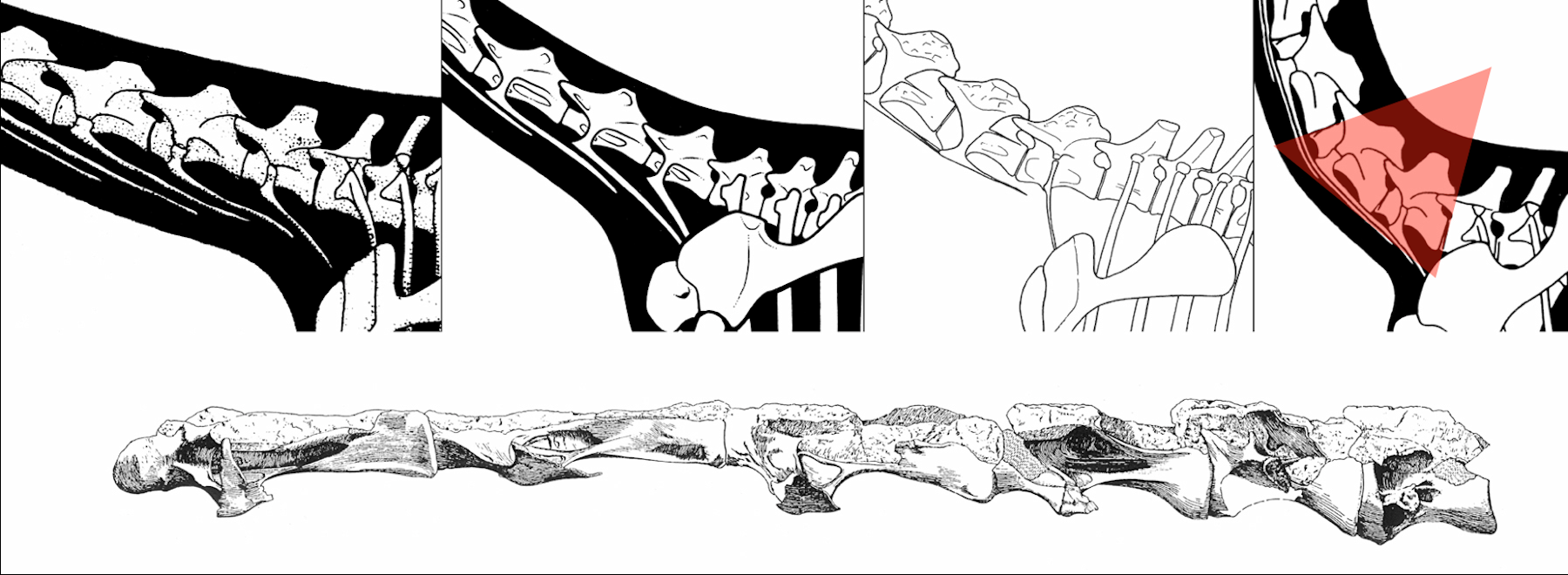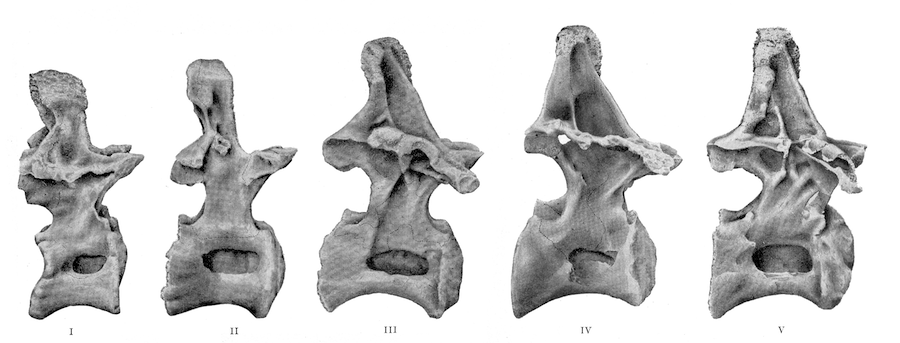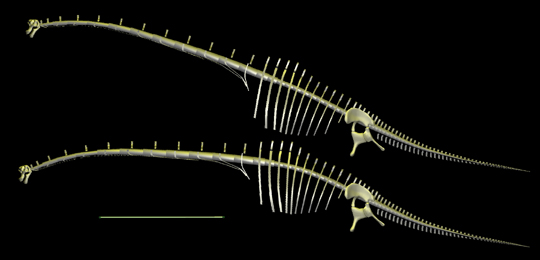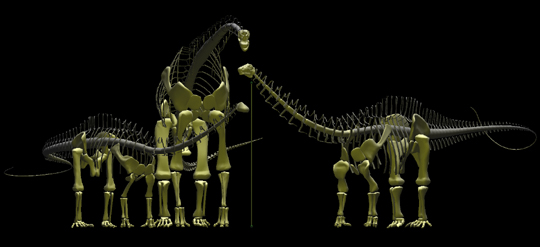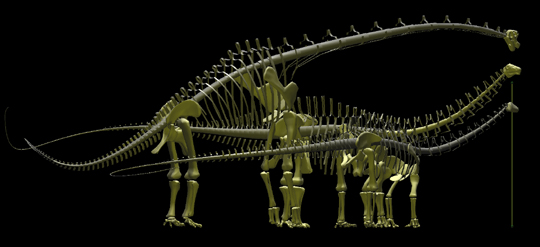|
Ever since the first proud reconstruction in 1939 Berlin, this sauropod is imagined to have had
a near vertical neck, but the fossils provide no basis for such a giraffe-like
interpretation. On the contrary, the original steel-engravings and supplemental photographs of
the individual vertebrae fossil, when composited
to form a vertebral column, shows evidence that the neck was a straight extension of the back as it emerged
from the shoulder, with a moderate upward slope due to the tall forelimbs, but a gradual droop out to the
head end of this long neck.
|
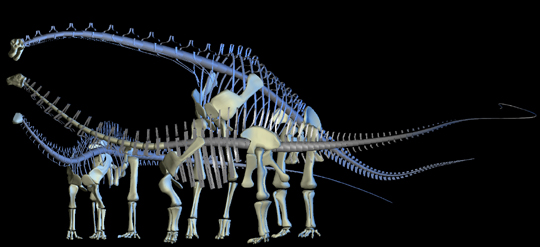 |
|
Apatosaurus (foreground, center) and Diplodocus look up to Brachiosaurus.
|

